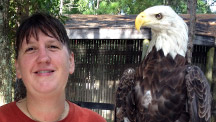Nature organizations and volunteers conducted a survey of Bohemian Waxwings in the Netherlands on 4 and 5 February. Waxwings are not native to the Netherlands.
A total of 1745 birds were counted. The birds come from arctic forests and have typically been rare visitors to the Netherlands. According to Waarnerming.nl, a website where users can note birds and other animals they have spotted in the wild, it is the third time in four years that the number of Waxwings counted in the Netherlands has increased. This year, however, was the first time an organized count was conducted.
Most of the birds were counted in Gelderland, with 443 individuals counted in ten groups. Many birds were also noted in the provinces Zuid Holland, Noord Holland, Overijssel and Utrecht. In the other provinces a maximum of 4 groups per province was noted.
The Waxwings are presently concentrated in the middle of the country. At the beginning of January a great number of the birds were noted in the north of the country, but most of them have now disappeared. Therefore it is expected that the population is moving south, as it has also been noticed in past years.
The Waxwing lives in the forest in northern areas, but while overwintering in the Netherlands they prefer to roost in urban areas. The birds are not afraid of people, likely because in their breeding areas they normally don’t have contact with humans.
Because of their unexpected, invasive behavior, in earlier times they were considered to be bringers of misfortune, hence their Dutch name Pestvoge”, or plague bird.
Source: Resultaten Pestvogeltelling 4 en 5 februari 2006
Share the birds, share the love!



